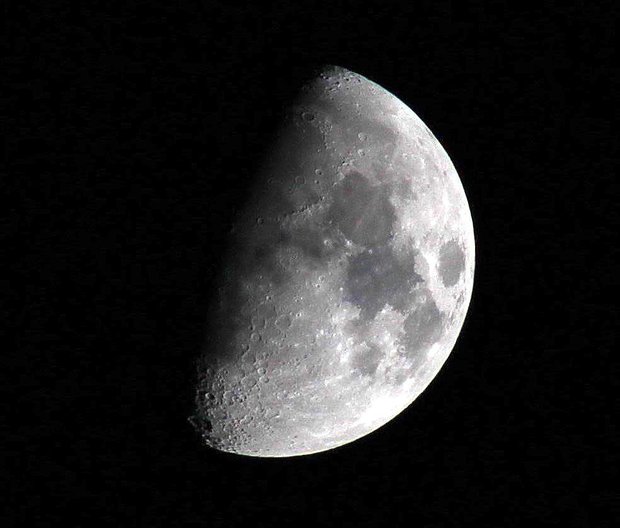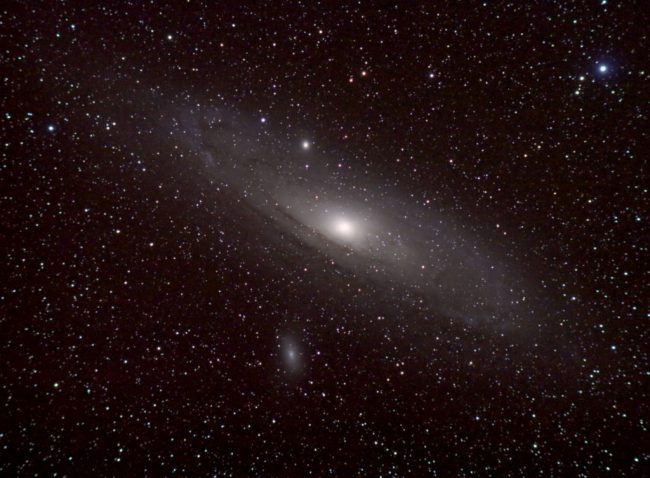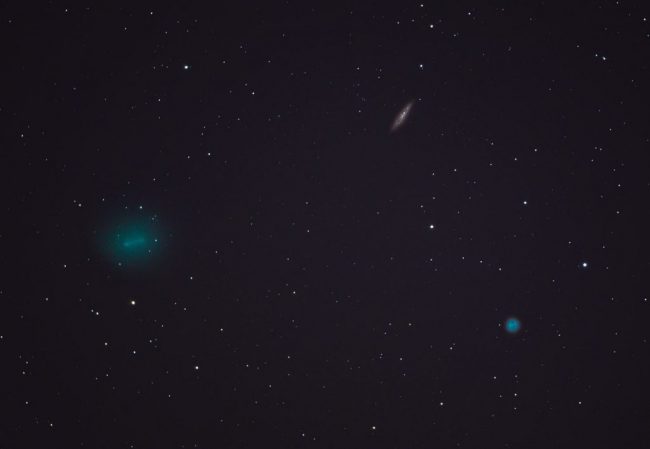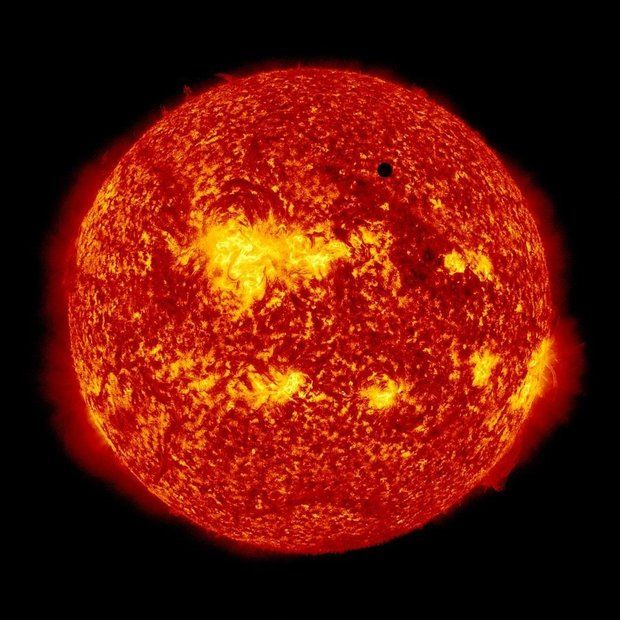Author's Note: The "Upstate New York Stargazing" series ran on the newyorkupstate.com and syracuse.com websites (and limited use in-print) from 2016 to 2018. For the full list of articles, see the Upstate New York Stargazing page.
Upstate NY Stargazing in October: The Orionids, International Observe the Moon Night
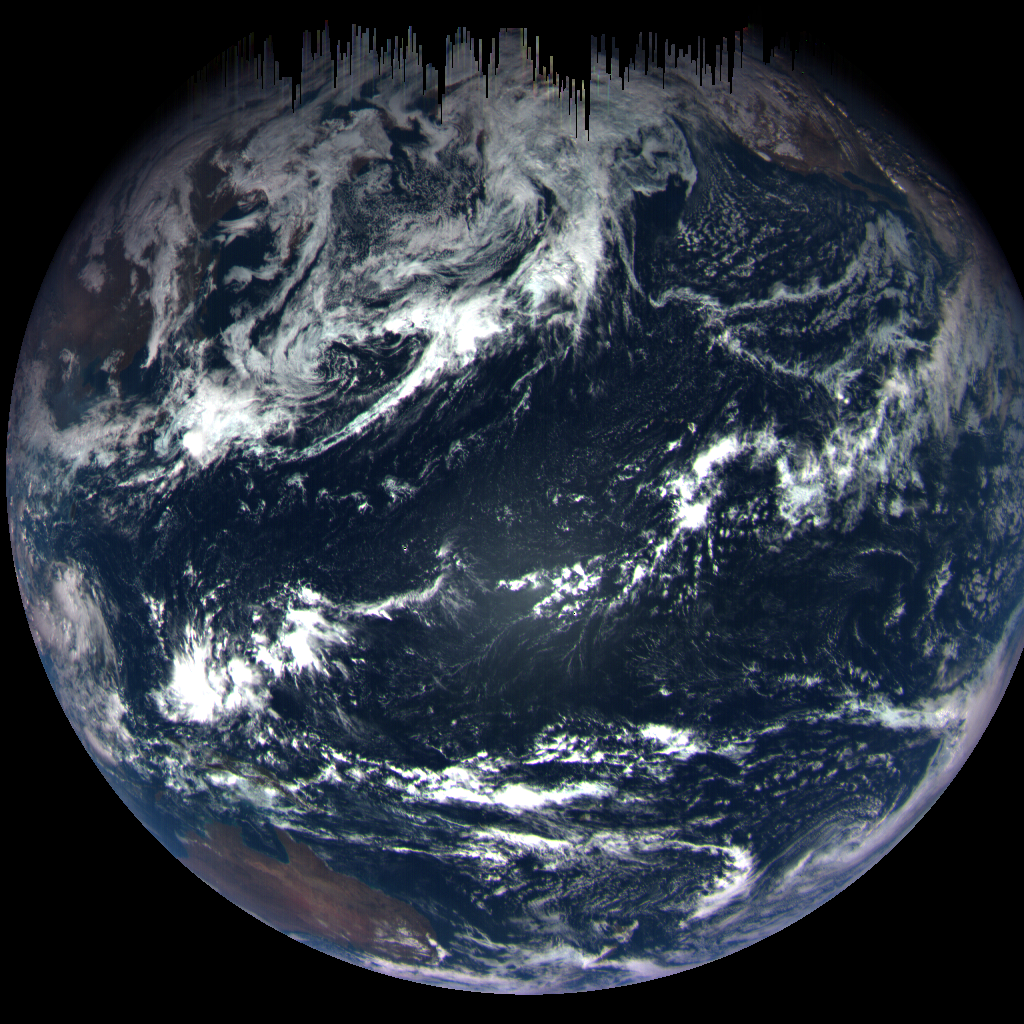
Updated: Oct. 01, 2017, 1:02 p.m. | Published: Oct. 01, 2017, 12:02 p.m.
By Damian Allis | Contributing writer
My great-grandfather was fond of the phrase "sometimes the long way is the short way." This seems less to be the case in domestic travel, but certainly holds some merit among professional astronomers. Consider the recently retired Cassini Probe – before ending up in Saturn's orbit in 2004, Cassini was sent on a path that found it flying past the inner planet Venus twice before flying by Earth and then Jupiter on its way to the ringed planet. For Cassini, the Venus-Venus-Earth-Jupiter Gravity Assist (VVEJGA) accelerated the probe at each step in a way that the largest rockets on the Earth at the time could not, making it possible for the very heavy Cassini probe to make it all the way to Saturn.
The image of Earth above may look like the cover of a bad scifi movie about an alien disintegration device, but it is in fact a near-complete snapshot of Earth during a gravity assist maneuver of the OSIRIS-REx probe this past Sept. 22. OSIRIS-REx is on its way to study and return a sample of the carbon-rich asteroid Bennu. There are two equally compelling reasons for this mission. First, if the planets were pies, then asteroids like Bennu would be the small pieces of leftover dough cuttings – while an incomplete picture of the final product, these asteroids provide a wealth of information about events very early on in the pie/planet making process. As we look into the future a bit, the second reason for this mission is a bit less appetizing. Calculations of Bennu's orbit indicate that it and Earth have a small chance of having a too-close encounter at some point in the 22nd century, making OSIRIS-Rex an early scout to give us a much better picture of the size and mass of this potential impactor.
Lectures And Observing Opportunities In Upstate/Central New York
New York has a number of astronomers, astronomy clubs, and observatories that host public sessions throughout the year. Announced sessions from several respondent NY astronomy organizations are provided for October so you can plan accordingly. As wind and cloud cover are always factors when observing, please check the provided contact information and/or email the groups a day-or-so before an announced session, as some groups will also schedule weather-alternate dates. Also use the contact info for directions and to check on any applicable event or parking fees.
Amateur astronomers and the interested public are invited to Kopernik AstroFest 2017, a two-day introduction/solar observing/lecture/nighttime observing event that also marks the 35th year of the Kopernik Astronomical Society in Vestal. For additional details, see kopernikastro.org/astrofest.
Astronomy Events Calendar
| Organizer | Location | Event | Date | Time | Contact Info |
| Adirondack Public Observatory | Tupper Lake | APO Annual Meeting | Oct. 7 | 10:00 AM – 2:00 PM | email, website |
| Adirondack Public Observatory | Tupper Lake | Astrophotography Workshop | Oct. 19 – 22 | see event link | email, website |
| Albany Area Amateur Astronomers & Dudley Observatory | Schenectady | Senior Science Day | Oct. 2 | 3:00 – 4:00 PM | email, website |
| Albany Area Amateur Astronomers & Dudley Observatory | Schenectady | Night Sky Adventure | Oct. 17 | 7:00 – 8:30 PM | email, website |
| Albany Area Amateur Astronomers & Dudley Observatory | Schenectady | AAAA Meeting | Oct. 19 | 7:30 – 9:00 PM | email, website |
| Albany Area Amateur Astronomers & Dudley Observatory | Schenectady | Octagon Barn Star Party | Oct. 27 | 7:00 – 9:00 PM | email, website |
| Astronomy Section, Rochester Academy of Science | Rochester | Member Meeting | Oct. 6 | 7:30 – 9:30 PM | email, website |
| Astronomy Section, Rochester Academy of Science | Rochester | Observing At The Strasenburgh | Oct. 7 | 9:00 – 10:30 PM | Jim S., 585-703-9876 |
| Astronomy Section, Rochester Academy of Science | Rochester | Observing At The Strasenburgh | Oct. 14 | 9:00 – 10:30 PM | Jim S., 585-703-9876 |
| Astronomy Section, Rochester Academy of Science | Rochester | Observing At The Strasenburgh | Oct. 21 | 9:00 – 10:30 PM | Jim S., 585-703-9876 |
| Astronomy Section, Rochester Academy of Science | Rochester | Observing At The Strasenburgh | Oct. 28 | 9:00 – 10:30 PM | Jim S., 585-703-9876 |
| Baltimore Woods | Marcellus | Hello Fall Skies | Oct. 20 | 7:30 – 9:30 PM | email, website |
| Kopernik Observatory & Science Center | Vestal | KAS Monthly Meeting | Oct. 4 | 7:00 – 9:00 PM | email, website |
| Kopernik Observatory & Science Center | Vestal | Friday Night Lecture & Observing | Oct. 6 | 7:00 – 9:00 PM | email, website |
| Kopernik Observatory & Science Center | Vestal | Kopernik AstroFest 2017 | Oct. 13-14 | see event link | email, website |
| Kopernik Observatory & Science Center | Vestal | Friday Night Lecture & Observing | Oct. 20 | 7:00 – 9:00 PM | email, website |
| Kopernik Observatory & Science Center | Vestal | Friday Night Lecture & Observing | Oct. 27 | 7:00 – 9:00 PM | email, website |
| Mohawk Valley Astronomical Society | Waterville | Meeting | Oct. 11 | 7:30 – 9:00 PM | email, website |
| Mohawk Valley Astronomical Society | Waterville | Public Star Gazing | Oct. 14 | 7:30 – 11:00 PM | email, website |
| Syracuse Astronomical Society | Syracuse | Lecture @ OCC & Observing | Oct. 20 | 7:00 – 9:00 PM | email, website |
Lunar Phases
| Full Moon | Third Quarter: | New Moon | New: |
| Oct. 5, 2:40 PM | Oct. 12, 8:25 AM | Oct. 19, 3:12 PM | Oct. 27, 6:22 PM |
The Moon's increasing brightness as Full Moon approaches washes out fainter stars, random meteors, and other celestial objects – this is bad for most observing, but excellent for new observers, as only the brightest stars (those that mark the major constellations) and planets remain visible for your easy identification. If you've never tried it, the Moon is a wonderful binocular object. The labeled image identifies features easily found with low-power binoculars.
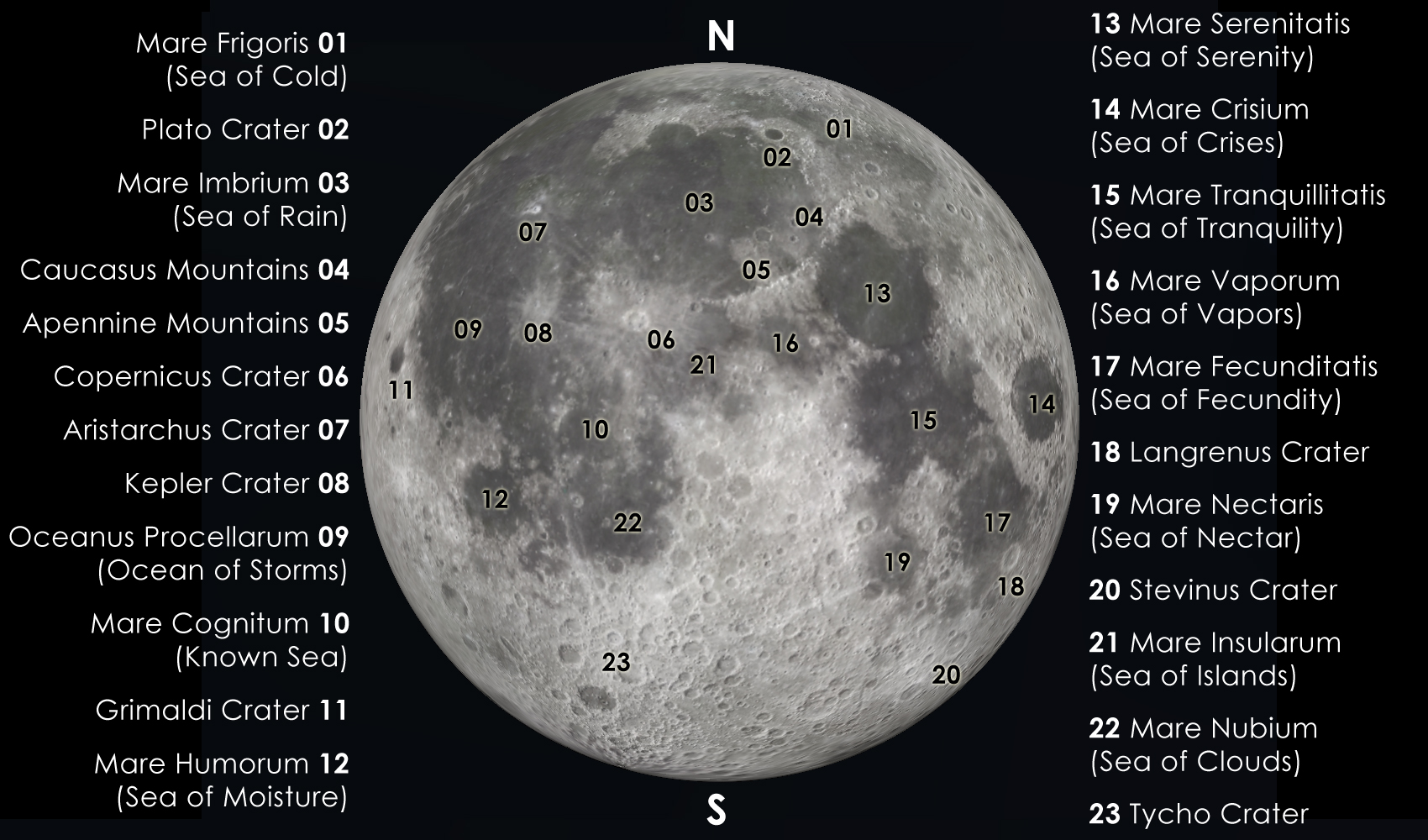
October 28th marks the return of International Observe the Moon Night (IOMN), this year featuring a just-past first quarter Moon that will be out and about until midnight. Several NY clubs have scheduled or may schedule IOMN events this month, but a good pair of binoculars and a map of major lunar features are also sufficient to keep you looking up that evening. For a list of all registered events in your area, keep track of NASA's observethemoonnight.org website.
Observing Guides
Items and events listed below assume you're outside and observing most anywhere in New York state. The longer you're outside and away from indoor or bright lights, the better your dark adaption will be. If you have to use your smartphone, find a red light app or piece of red acetate, else set your brightness as low as possible.
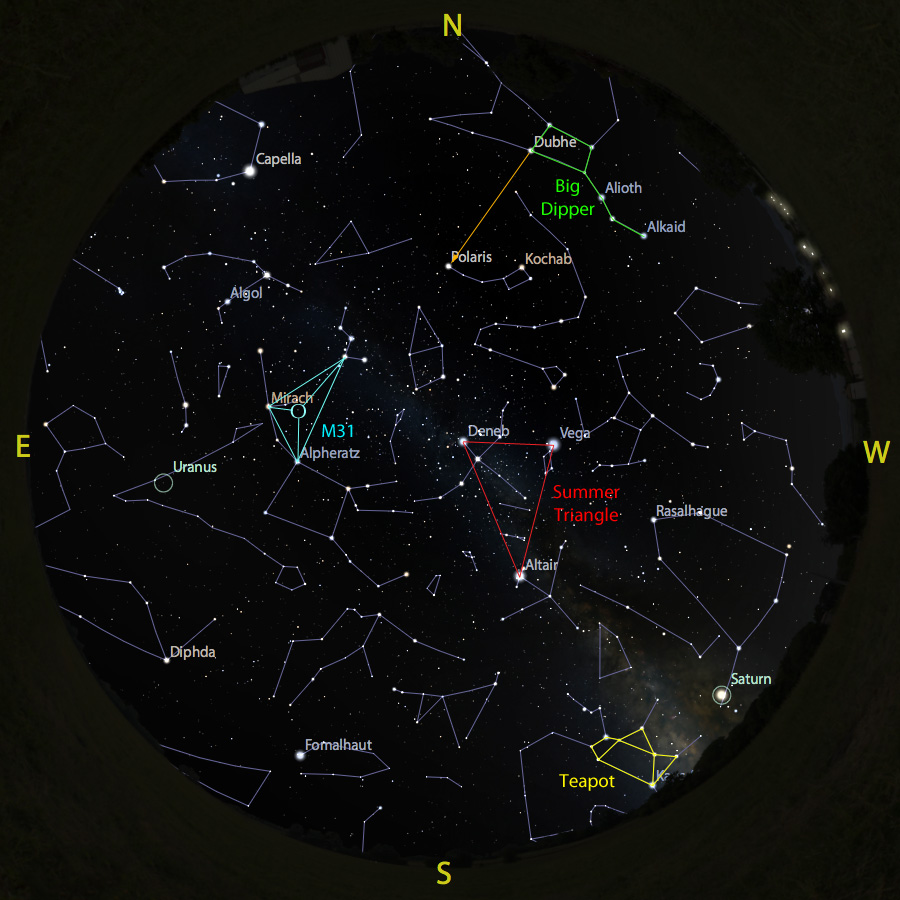
Evening Skies: The two most prominent shapes in the sky are the Big Dipper and the Summer Triangle, with the steam from the Sagittarius Teapot now engulfing the planet Saturn to the south. When you look into the spout of the teapot, you're looking in the direction of the densest part of our Milky Way galaxy – a scan with binoculars will reveal a number of objects that do not come into focus like their surrounding stars.
The Big Dipper is a bright and easy guide for finding Polaris, the north star. Opposite the Big Dipper from Polaris is the constellation Cassiopeia, a giant "W" in the nighttime sky. From the brightest "V" shape in Cassiopeia, look for the two brightest stars in the arrows direction and remember that triangle. Scanning within the center of this triangle in low-power binoculars will reveal a small fuzzy object that cannot be bright into focus – this is M31, our largest galactic neighbor, located in the constellation Andromeda.
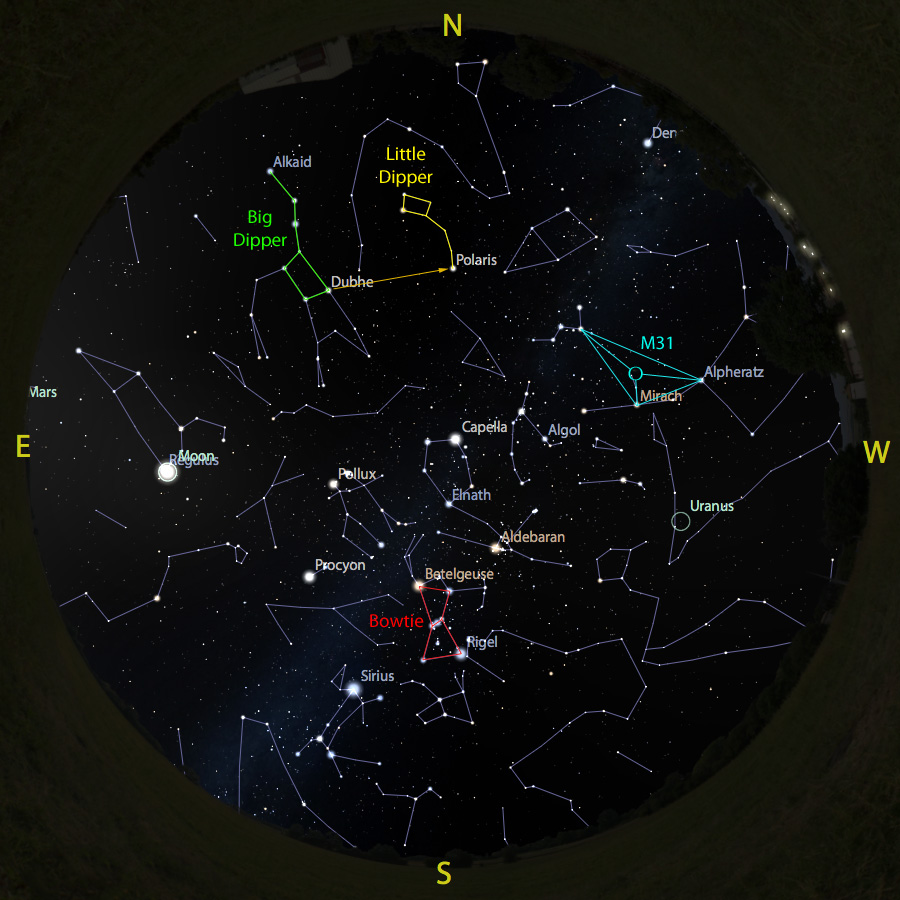
Morning Skies: Venus remains the most prominent pinpoint in the morning sky this month and has distanced itself quite a ways from the best-of-winter grouping of bright stars and constellations it was a member of just a few months past. With Orion and its cohort all above the horizon well before dawn, learning eight constellations at once is as easy as following some lines within Orion's bowtie asterism.
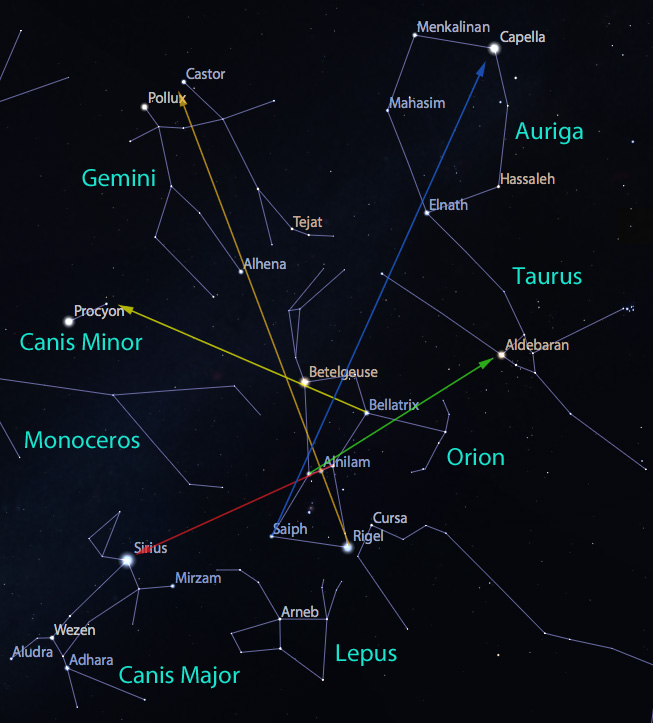
Planetary Viewing
Mercury, Venus, and Mars: The other rocky planets in the Solar System remain close to each other in the morning skies this month, although we lose Mercury in the pre-sunrise sunlight very early on. The play-by-play of notable events is listed below, with each event visible before 7:00 a.m. Binoculars will make each event more interesting, but be sure to put them away before sunrise:
October 1st: Perhaps your last good chance to see Mercury in the morning this year, rising soon before sunrise.
October 5th: Venus and Mars don't get much closer than you'll see this morning as they sit on the Leo-side of the Leo/Virgo border, looking like a great binary star in binoculars.
October 14th: Now both in the constellation Virgo, Venus and Mars will just barely fit inside the field of view of 10×50 binoculars.
October 17th: Mars and a sliver-of-a-crescent Moon make for a great close pairing in binoculars. Venus and that same crescent make for a spaced out pair this morning.
October 31st: Venus and the bright star Spica in Virgo make for their closest morning pairing in October. Their closest approach occurs on November 3rd.
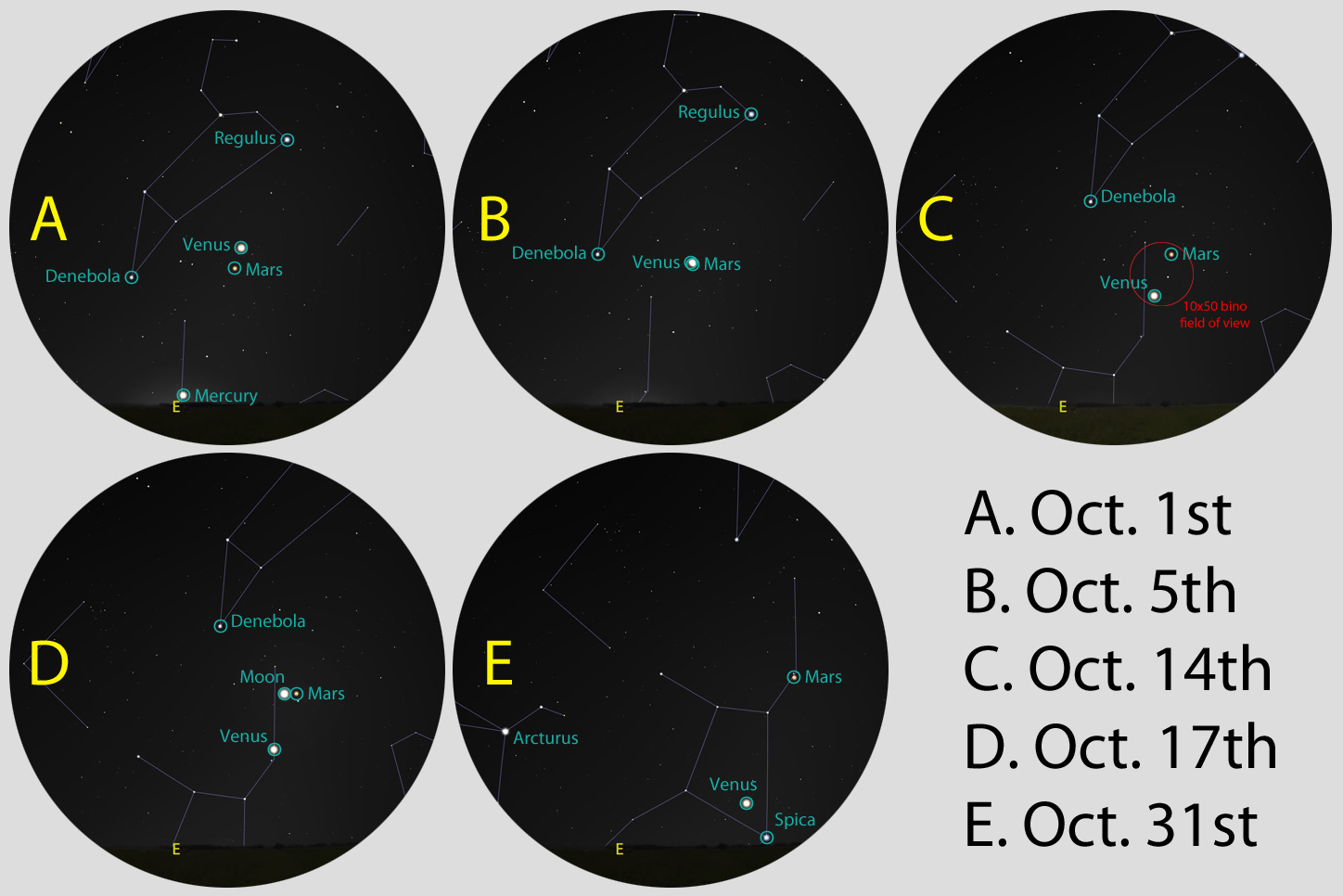
Jupiter: Jupiter is just barely observable with binoculars after sunset and is otherwise washed out by the light at dusk. It returns to our skies in December in the form of a bright morning object. In the meantime, you have plenty of opportunity to see Jupiter in stunning detail and at your own convenience thanks to the steady stream of scientific data and imagery coming to us from the NASA Juno mission (tw,fb).
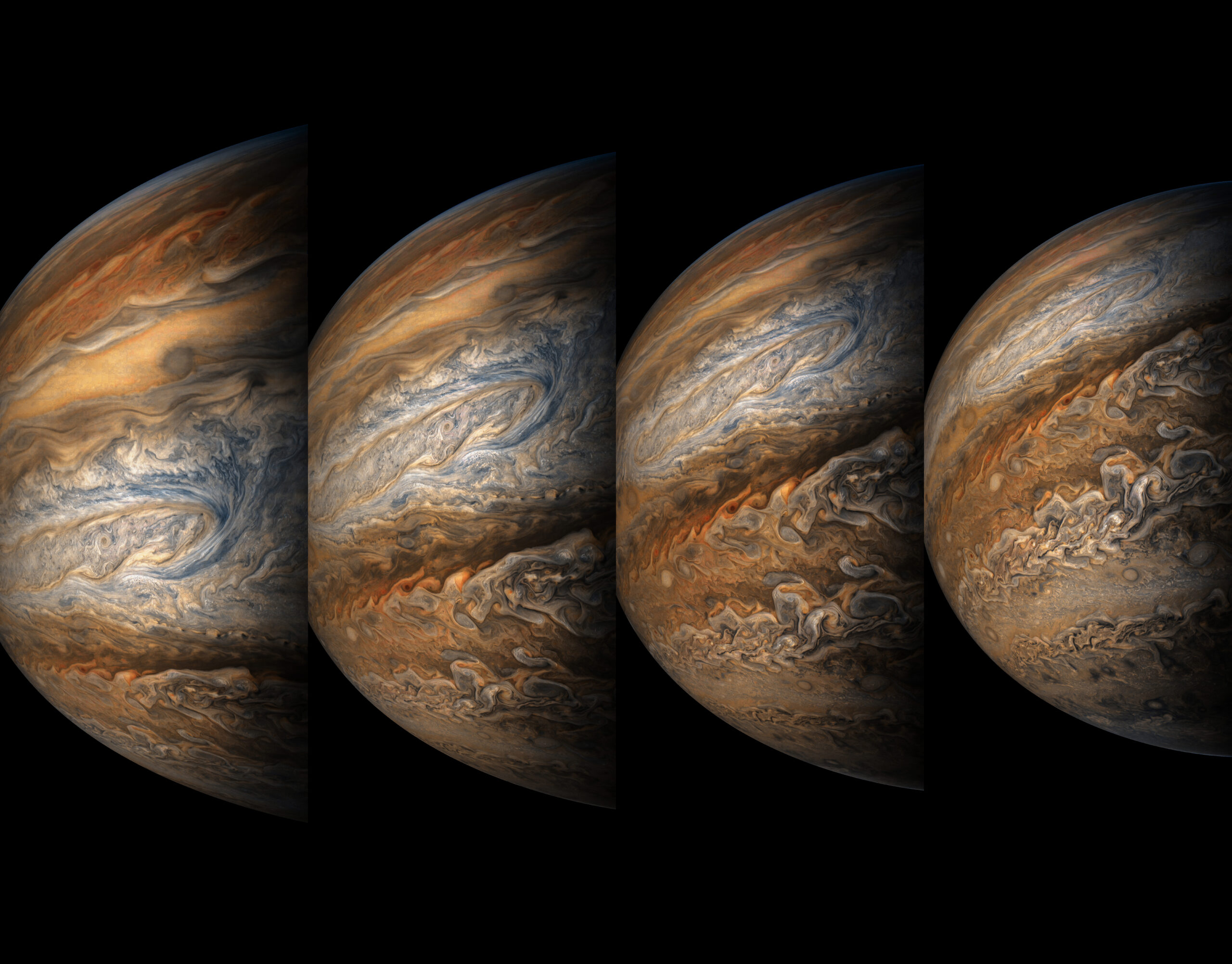
Saturn: Just as we lost Jupiter to the setting sun this past month, Saturn is not much longer for our evening skies this year. Observers can catch Saturn after sunset to the southwest, setting before 8:30 p.m. by month's end. If you've not yet found the Sagittarius teapot asterism and need an alternative observing aid, Saturn exists at the southern-most corner of a massive trapezium composed of Altair, Vega, Arcturus, and Saturn.
Your last pairing with Saturn this month is with the sliver-of-a-crescent Moon on the 23rd and 24th. Saturn returns to our skies very early in January and will be observable only very close to sunrise when it does. It will then be an increasingly accessible highlight of nighttime observers for 2018.
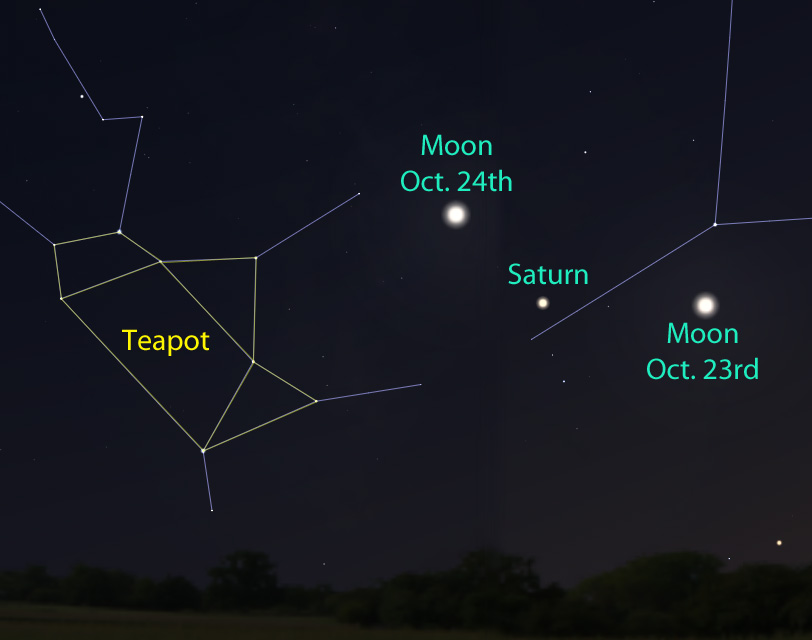
ISS And Other Bright Satellites
Satellite flyovers are commonplace, with several bright passes easily visible per hour in the nighttime sky, yet a thrill to new observers of all ages. Few flyovers compare in brightness or interest to the International Space Station. The flyovers of the football field-sized craft with its massive solar panel arrays can be predicted to within several seconds and take several minutes to complete.
The first two weeks of October will see a number of prominent flyovers in the northern sky, including five double-passes on the early evenings of the 1st, 3rd, 5th, 7th, and 9th. After the 14th, it is celestial crickets until month's end, when the ISS returns as an early morning object more to our south.
ISS Flyovers
| Date | Brightness | Approx. Start | Start Direct. | Approx. End | End Direct. |
| 10/1 | very | 7:28 PM | W | 7:34 PM | NE |
| 10/1 | moderately | 9:06 PM | NW | 9:07 PM | N/NW |
| 10/2 | moderately | 8:13 PM | W/NW | 8:17 PM | N/NE |
| 10/3 | moderately | 7:20 PM | W/NW | 7:26 PM | NE |
| 10/3 | moderately | 8:58 PM | NW | 8:59 PM | N/NW |
| 10/4 | moderately | 8:05 PM | NW | 8:09 PM | N/NE |
| 10/5 | moderately | 7:12 PM | NW | 7:17 PM | NE |
| 10/5 | moderately | 8:49 PM | NW | 8:51 PM | N/NW |
| 10/6 | moderately | 7:57 PM | NW | 8:00 PM | N/NE |
| 10/7 | moderately | 7:04 PM | NW | 7:09 PM | NE |
| 10/7 | moderately | 8:41 PM | NW | 8:42 PM | N/NW |
| 10/8 | very | 7:48 PM | NW | 7:52 PM | NE |
| 10/9 | moderately | 6:56 PM | NW | 7:01 PM | E/NE |
| 10/9 | very | 8:32 PM | NW | 8:34 PM | N/NW |
| 10/10 | very | 7:40 PM | NW | 7:44 PM | E/NE |
| 10/11 | extremely | 8:23 PM | W/NW | 8:26 PM | W |
| 10/12 | extremely | 7:31 PM | NW | 7:36 PM | E/SE |
| 10/13 | very | 8:15 PM | W/NW | 8:18 PM | S/SW |
| 10/14 | extremely | 7:22 PM | W/NW | 7:28 PM | SE |
| 10/30 | extremely | 6:54 AM | SW | 7:00 AM | E/NE |
| 10/31 | very | 6:02 AM | S/SW | 6:07 AM | E/NE |
Predictions courtesy of heavens-above.com. Times later in the month are subject to shifts – for accurate daily predictions, visit spotthestation.nasa.gov.
Meteor Showers: Orionids – Peaking October 20th to 21st
Meteor showers occur when the Earth passes through the debris field of a comet or asteroid. As these objects approach the warming sun in their long orbits, they leave tiny bits behind – imagine pebbles popping out the back of a large gravel truck on an increasingly bumpy road. In the case of meteor showers, the brilliant streaks you see are due to particles usually no larger than grains of sand. The Earth plows through the swarm of these tiny particles at up-to 12 miles-per-second. High in the upper atmosphere, these particles burn up due to friction and ionize the air around them, producing the long light trails we see. We can predict the peak observing nights for a meteor shower because we know when and where in Earth's orbit we'll pass through the same part of the Solar System – this yearly periodicity in meteor activity is what let us identify and name meteor showers well before we ever knew what caused them.
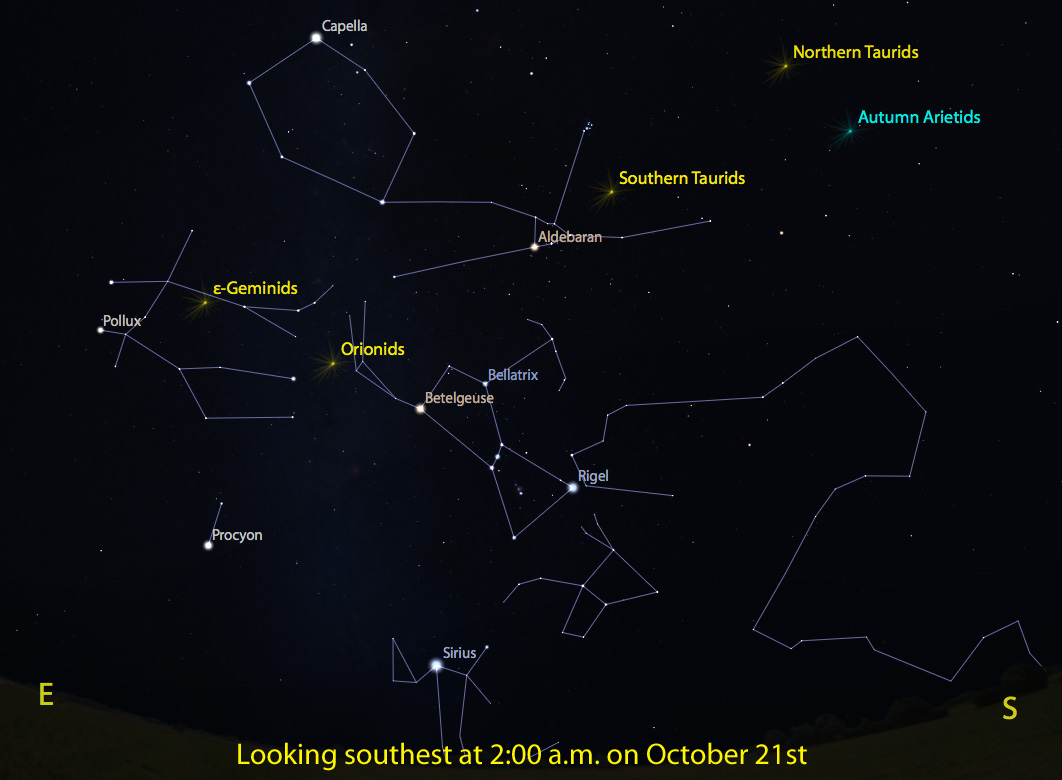
The Orionids are the most prominent meteor shower in October, but ride near the bottom of the top-10 list of active showers for the year. Observers simply interested in seeing any shooting stars do benefit from the Orionids peaking at a time of year when a number of less significant meteor showers are also active, including one of the Geminids and two Taurids showers. This year, the grouping of active showers around the Orionids peak benefit greatly from the absence of the Moon during the 20th-21st peak.
How to observe: To optimize your experience, lie flat on the ground with your feet pointed towards Orion – meteors will then appear to fly right over and around you.
Those interested in seeing a full list should check out the American Meteor Society meteor shower calendar.
Learn A Constellation: Camelopardalis the Giraffe
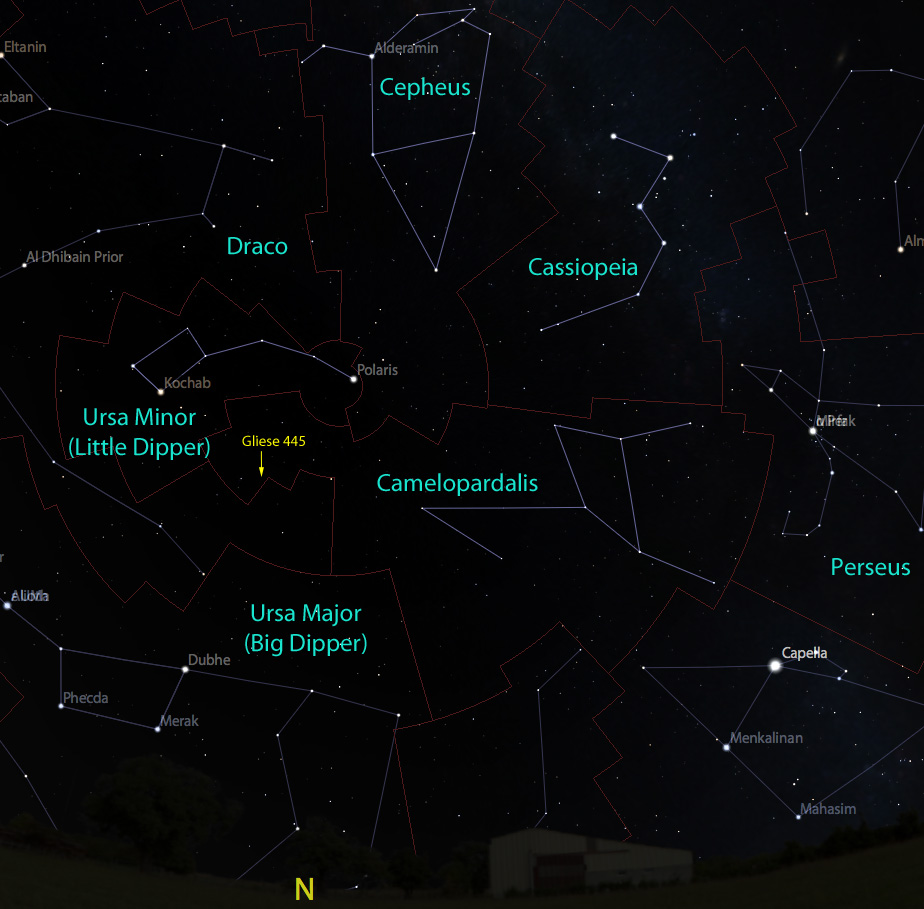
Unlike the animal the star grouping is supposed to represent, Camelopardalis does not stand out in the crowd of northern constellations. While one of the larger constellations in the sky, you might be hard-pressed to even make out the stars of the giraffe in light-polluted skies. We saved Camelopardalis for last in our survey of the northern-most constellations simply because finding it is easier once you know where Cepheus, Ursa Minor, and Cassiopeia are to orient yourself.
One thing Camelopardalis does share with its giraffe likeness is the wide open space it resides in. Like is neighbors Ursa Major, Ursa Minor, and Draco, much of the giraffe lies away from the dense galactic plane of the Milky Way. As such, you're gazing deep into the the void of space when you look around the Ursa Minor-side of Camelopardalis – this is bad for your easy observing of bright deep sky objects in binoculars, but excellent for astronomers looking for distant galaxies to study with high-power telescopes. Camelopardalis does hold one distinct honor among the northern constellations – Voyager 1 is currently 40,000 years away from, but on course to, a close encounter with Gliese 445, tucked away at the very edge of the Draco/Camelopardalis border.
Dr. Damian Allis is the director of CNY Observers and a NASA Solar System Ambassador. If you know of any other NY astronomy events or clubs to promote, please contact the author.
Original Posts:
- https://www.newyorkupstate.com/outdoors/2017/10/upstate_ny_stargazing_in_october_the_orionids_international_observe_the_moon_nig.html
- https://www.syracuse.com/outdoors/2017/10/upstate_ny_stargazing_in_october_the_orionids_international_observe_the_moon_nig.html
Tags:
